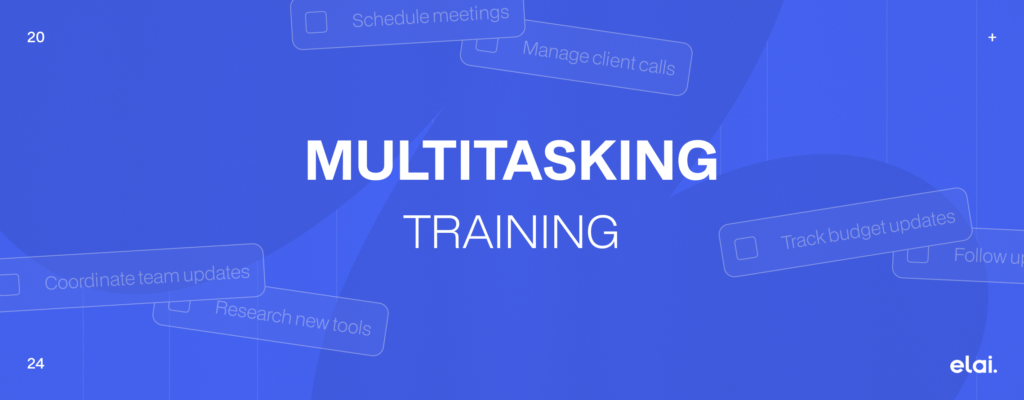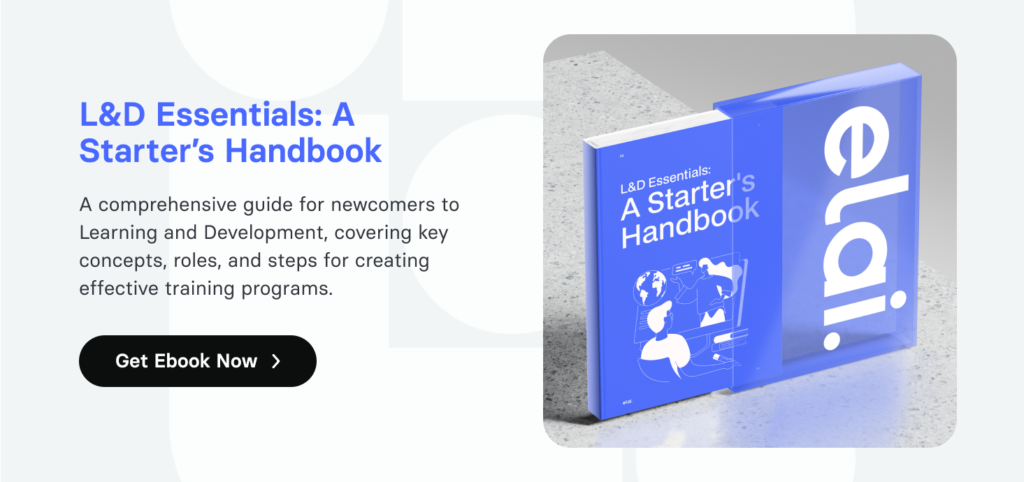The human brain is a special complex organ that is remarkable by its exclusive ability to do several tasks at once simultaneously, unlike computers. However, does multitasking affect the efficiency of the performance? Doing multiple things at the same time is really outstanding, but in the realm of a corporate environment, such skills must be continuously trained and motivated by company leaders. Some employees tend to multitask thanks to their neurological and psychological predispositions, whereas others need to train themselves by implementing particular training programs into their ongoing workflow.
Behavioral studies on Human Perception and Performance conducted in 2003 show that multitask training enhances overall task performance, by such means reducing the interference they can cause to one another.
Multitasking training sounds like a magic pill, but if you think about it, this practice has many pitfalls, especially considering the peculiarities of each individual’s psychology in the workplace. If it’s so effective, why don’t all companies do it? To begin with, let’s figure out what multitasking is.
What is Multitask Learning?
Multitasking is a special technique when individuals, teams, or even machines are trained to perform several tasks simultaneously. In the workplace, this approach can be incredibly beneficial for automating various processes, saving time and effort, and improving efficiency.
The research on capacity limits of information processing in the brain (2005) points out that although we often engage in multitasking in our daily lives (e.g., driving the car while talking on the phone), our ability to perform tasks quickly and accurately is significantly impaired when they are executed simultaneously. Multitasking costs are widespread and occur regardless of the complexity of the tasks. This indicates a central source of interference in our cognitive system that affects the simultaneous execution of tasks. However, according to another study, this fundamental limitation of our cognitive system is not immutable or fixed: extended practice and training with dual tasks can significantly reduce the costs of multitasking.
Is it even possible to multitask?
Multitasking is often considered to be a myth. Controversially, some scientists are convinced that our brains are simply switching between tasks very rapidly, whereas others believe that human brain can do multiple things at once. One way or another, this rapid switching and cognitive overload might lead to decreased efficiency, increased errors, and even stress.
However, task-switching opens up a lot of opportunities such as changing the perspective and approach to doing the task, and training your focus. Even though our brains are better equipped to handle one task at a time, multi tasking learning allows individuals to train their focus, letting them perform more efficiently and effectively.
Pros and Cons of Multitask Learning
Writing an email and talking with the customer on the phone, while sipping coffee and preparing report for tomorrow’s meeting? Multi-task learning has recently become a common practice within the corporate modern environment. While it might seem efficient, the reality is more complex. Since our brains are versatile and multifunctional, the implementation of multitasking techniques may have both advantages and disadvantages:
Benefits of Multitask Learning
- Problem-solving: Multitask learning helps employees approach problems from various perspectives by simply switching activities or focusing on different tasks.
- Adaptability: This approach prepares employees for changing roles and responsibilities making them more adaptable to different working conditions.
- Creativity: Multitasking promotes innovative thinking, creativity, and problem-solving.
- Improved decision-making: It helps employees make informed and effective decisions by taking into consideration all the aspects of the situation.
Challenges of Multitask Learning
- Cognitive overload: Doing several tasks at once can lead to potential information overload and cognitive fatigue.
- Prioritization difficulties: Employees who practice multitasking may struggle to balance multiple tasks effectively.
- Lack of focus: If the employees’ focus is not trained enough, it can lead to decreased productivity and quality of work.
Multitasking might have some significant cons for those who are not prepared for such practices, however, the potential challenges may be eliminated by simply training your brain capacity. With the right training techniques, multi task learning can become your strength leading to high efficiency and productivity.
Effective Multitasking Activity For Groups Of Learners
Here’s the game that will help your team test and train multitasking and compare your performances with single-tasking. The results will show whether multitasking is suitable for your cognitive abilities or whether single-tasking might appear more productive.
Participants: Two people—one player and one timekeeper.
Objective: To compare the efficiency of single-tasking versus multitasking.
Exercise 1: The player counts from 1 to 10 as fast as possible. The timekeeper records the time.
Exercise 2: The player recites the alphabet from A to J as fast as possible. The timekeeper records the time.
Exercise 3: The player alternates between counting numbers (1 to 10) and reciting letters (A to J) in sequence (e.g., A, 1, B, 2, etc.). Timekeeper records the time and requires the sequence to be correct.
Outcome: Compare the time taken for each exercise and reflect on how the results from the game illustrate the effectiveness of single-tasking and multitasking in everyday work scenarios.
How to teach your brain to multitask?
After having passed the test, the results might vary depending on the individual’s skills and the specs of neuropsychology. If you find handling multiple tasks effective and applicable to your learning style and workflow, let’s deep dive into the efficient strategies on how to train multitasking to boost your performance and productivity:
- Time management techniques: Use strategies like the Pomodoro Technique or time blocking. Do not forget to take breaks and step away from your work every hour or so. Use these pauses to relax and recharge.
- Task prioritization methods: It’s important to prioritize tasks based on urgency and importance and allocate specific time slots for different tasks. Learn to say ‘No’: avoid taking on more than you can handle. If possible, delegate tasks to others.
- Mindfulness and meditation: Explore the mindfulness practices, meditation, and deep breathing that can improve focus and reduce stress. Also, be aware of your thoughts and emotions while working on multiple tasks.
- Minimize distractions: Employees must create a dedicated workspace. Another tip is to turn off unnecessary notifications on your phone and computer.
- Technological tools: Use apps and software to limit distractions during specific time periods.
Remember: While multitasking can be a challenge, with the right strategies, you can improve your ability to handle multiple tasks effectively. The key is to focus on quality over quantity and to prioritize tasks that are most important to you.
Crafting Perfect Multitasking Training with Elai.io
Incorporating multitask learning into your corporate training strategy can equip employees with valuable skills for the modern workplace. However, designing an effective training program that will become efficient for employees requires careful consideration. Here’s where Elai.io can be a powerful tool:
Benefits of Elai.io for Multitasking Training Creation
- 80+ talking AI digital narrators
- Interactive quizzes for knowledge checking and clickable buttons for additional resources
- Over 75 languages support to reach employees all around the globe
- Hundreds of ready-made video templates for professional-looking video generation
- Brand Kit to maintain the company’s style with custom fonts and music upload, logo insertion, and brand colors
- Custom Avatar Creation and Voice cloning for a more personalized touch
- Screen-recording option for demos and tutorials
- SCORM export or your ready courses to any LMS
- API for scaling video courses in bulk
- AI Storyboard to craft multitasking training course from text prompts and more!
With Elai.io, creating multitasking training online is easy, affordable, and quick. You can simply break down complex multitasking skills into bite-sized microlearning video modules delivered by Elai’s AI avatars. It will keep employees focused and allow them to practice skills in short bursts.
Also, the platform allows leaders to produce scenario-based training by creating realistic scenarios that simulate real-world multitasking challenges with listening AI avatars and our real-time chatbot. Employees can practice prioritizing tasks, managing interruptions, and making decisions under pressure.
Online video makers like Elai.io boast about their interactive gamification elements such as quizzes, buttons, and animated objects that increase engagement and reinforce key learning points. This makes multitasking training more enjoyable and interactive.
Elai opens up new opportunities for personalized learning paths and tailors training programs to individual needs and skill levels. You can easily customize, update, and adjust the difficulty or content accordingly.
To sum up
Multitasking might be a myth, however, it can also become an efficient approach that fosters productivity in the modern corporate workplace. To become a multitasker, you need to train your brain with particular techniques and leverage specialized tools. This combination will decrease cognitive overload and improve the focus of learners. A well-trained brain frees up a potential for personal development and company growth.
FAQ
What is multitask learning?
Multitask learning is a technique that simply teaches you do several tasks simultaneously with the same efficiency while avoiding burnouts and cognitive overloads.
How to train your brain to multitask effectively?
To multitask effectively and avoid mental overloads, you should use time management techniques like the Pomodoro Technique or time blocking, take breaks while working, prioritize tasks based on urgency and importance and allocate specific time slots for different tasks, avoid taking on more than you can handle, utilize the mindfulness practices, meditation, and deep breathing and use apps and software to limit distractions at work.
How to create a multitasking training course?
Step 1: Go to the Elai.io website
Step 2: Choose Video Template
Step 3: Write a script for your video
Step 4: Edit your course with animations, interactive quizzes, and buttons
Step 5: Render your video and share it with the learners


